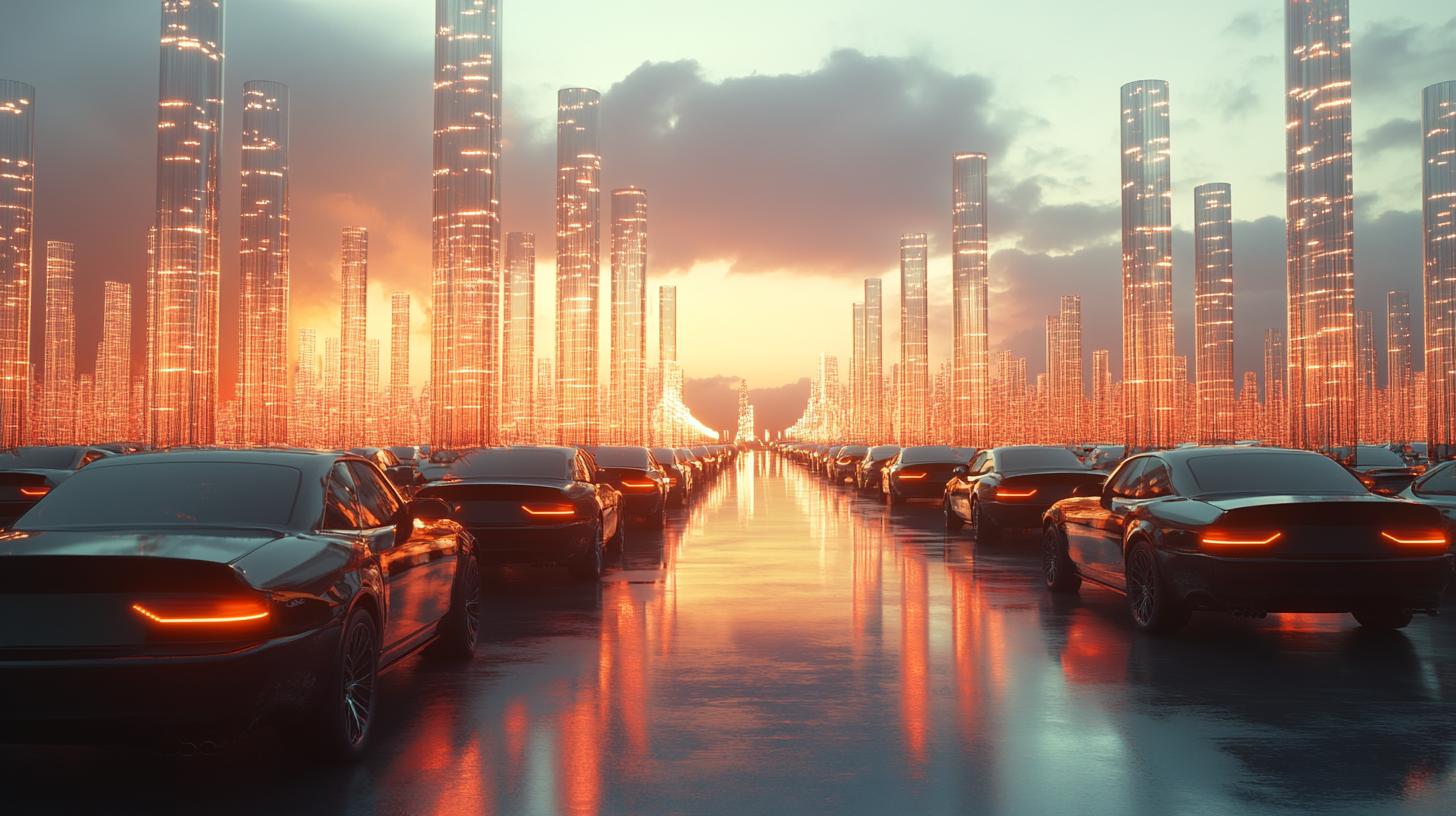ကားသုံးစွဲမှုနှင့် စိန်ခေါ်မှုများမြို့ပြဘ၀တွင်

ယနေ့ခေတ်တွင် ကားသုံးစွဲမှုသည် လူစွန်းစိတ်တွင် အရေးကြီးသော အခန်းကဏ္ဍများထဲတွင် တစ်ခုအချို့ဖြစ်သည်။ လူမျိုးစုများတွင် ကားမောင်းရန်နှင့် ကားသုံးရန် များပြားလာသည်မှာ သာမန္အကြောင်းအရာ ဖြစ်နေပြီဖြစ်သည်။ ကားသည် မကြာခဏ လူသားတို့၌ လွတ်လပ်မှု၊ အဆင်ပြေလွယ်ကူမှုနှင့်အတူ ခြေသလှမ်းပြင်းထန်မှုတို့ကို ဖျော်ဖြေရန် ကောင်းမွန်သော ကိရိယာတစ်ခုအနေဖြင့် အသုံးပြုကြသည်။ သို့ရာတွင် ယင်း၏ တိုးတက်လာမှုသည် ယနေ့ခေတ် လူ့ဘ၀တွင် စိန်ခေါ်မှုများကိုလည်း ဖို့လံခြင်းမရှိဘဲ တွေ့ရှိရနိင်သည်။ ပထမဆုံးတော့ ကားသုံးစွဲမှုကြောင့် လူတွင် လွတ်လပ်မှု နှင့် ရွှမ်းစနစ်အင်အားတိုးလာသည်ဟု ဆိုနိုင်သည်။ ကားဖြင့် သယ်ယူရသော အသွားအလာများသည် လူတိုင်း၏ အကြောင်းရင်းများအတွက် အတွင်းရေးလာသော အခန်းကဏ္ဍခြစ်ကို လွယ်ကူစွာ ချင်းလယ်မှတ်တမ်းပြုစေသည်။ လူများသည် လိုအပ်သောနေရာများသို့ သွားလာရန် အဆင်ပြေနိုင်ပြီး သင်္ကြန်ခရီးများ၌ လွယ်ကူစွာ သွားလာနိုင်သည်။ ယခုသင်္ကြန်နေ့တွင်လည်း များပြားသောမုန့်များ၊ အိမ်ထောင်စုများနှင့် အဖွဲ့အစည်းများသည် ကား၌ မျိုးစုံပြင်ဆင်မှုများပြုလုပ်သည့်အခက်အခဲများကို တားဆီးနိုင်ပါသည်။ ဒါပေမယ့် ကားသုံးစွဲမှုသည် အချို့သောဒုက္ခများကိုလည်း ဖျော်ဖြေရန် သက်ကာရလဒ်ဖြစ်နေသည်။ ယာဉ်အရေအတွက် တိုက်ခိုက်မှုများ၊ လမ်းပေါ် ပျန်းရောမှုများနှင့် ပတ်ဝန်းကျင်ကာကွယ်ရေး စိန်ခေါ်မှုများမှာ မျှဝေမှုရိှပါသည်။ နေ့စဉ်တွင် ကားဦးဆောင်မှုမည်သည့်မုန်းတီးမှုများစွာ ဖြစ်ပေါ်လာသည်ဟု ဆိုရပါမည်။ သို့ရာတွင် ယနေ့ခေတ်တွင် တိုးတက်လာသော ကားထုတ်လုပ်မှုနှင့် ကား၏ အဆင်ပြေမှုဟာ အကြောင်းအရာမရှိပါက အကျိုးသက်ရောက်မှုများကို ဖန်တီးနိုင်သည်။ ယခင်က ပါဝင်ခဲ့သော ကားအမျိုးမျိုးသည် မြို့ပြမှုများတွင် အဓိပ္ပာယ်အောင်မြင်ခဲ့သည်။ အချို့သောမြို့များတွင် ပြောင်းလဲမှုအနေဖြင့် အထိအရောက်နှင့် အဟောင်းအကျစ်ပြဟယ်လ်များကို မျှဝေခဲ့ရသည်။ ခေတ်သစ်ကာလများတွင် ကားများသည် ကျောင်း၊ အလုပ်ကွက်နှင့် မွန်မြတ်လမ်းများတွင် စာရင်းသွင်းထားသည့်သင်ကြားမှုများနှင့်အတူ သက်ရှိရိယာများအခွင့်အရေးကို လျော့နည်းချည်းပါလိမ့်မည်။ ကားဒေသများလည်း အချိန်ပိုင်းများအပေါ်တွင် အဆင်အယှက်နိုင်၏။ လူမှုအဆက်အသွယ်အပြောင်းရင်းဖြင့် စက်မှုသက်ရောက်မှုမှ လပိုင်းမှစီးနင်းပေးသည်။ မကြာသေးမီအချိန်ကာလများတွင် ကားအသုံးပြုမှုကိုပြောင်းပွားစေခဲ့သည်။ လူတွင် အားသာချက်နှင့် အပျံမှာ အခက်အခဲများကို ချိုးဖောက်ရန် လိုအပ်သည်။ ထိုကြောင့် လူနေရပ်များကားသစ်၊ ပြင်ပစွန့်ပစ်များနှင့် ကားပစ္စည်းများကို အင်အားထုတ်ရန် ထိန်းစည်းကြောင်းအဖြစ် အားလုံးဖြစ်လာကြသည်။ အခြားသောပတ်ဝန်းကျင်၊ လမ်းပေါ်တင်ဆောင်မှုနှင့် ပြန်လည်လှုပ်ရှားမှုတို့သည် ကားသုံးစွဲမှုကို သွားလာ၍လည်း ကောင်းမွန်စွာဖြစ်လာသည်။ လျှောက်လောကျူမေးသာကသည် တစ်ဖွဲ့အသီးသီးနှင့် အပေါင်းအသမ်းပါဝင်ခြင်းဖြစ်စဉ်ကို ချိတ်ဆက် ဖြံ့ဖြိုးစေခြင်းဖြစ်သည်။ လူမှုစနစ်တွင် အားသာချက်များ ရရှိမည်မှာ ယနေ့ခေတ်တွင် ကားမောင်းခွင့်ရှိသောမဟုတ်။ လင်းလက်တဲ့ သိုင်းလွတ်မှု ကားများContemporary life includes constraints and activities that challenge traditional commuting options. People have adapted to this change, making daily trips reliant on automotive transport. The path of personal dependency has altered community dynamics, leading to the development of eco-friendly transportation solutions.
Despite society’s dependence on automobiles, new pathways are being forged. Many urban areas are examining transportation alternatives—such as biking, walking, and public transit systems—to mitigate reliance on cars. The recognition of climate change and urban congestion has prompted communities to innovate within transportation frameworks.
Emerging technologies and sharing systems have begun to reshape mobility dynamics, with electric and shared vehicles establishing new norms. The challenge of rising vehicle usage is coupled with the ever-evolving landscape of urban planning. New cities or neighborhoods are built with integrated transport systems that promote an eco-friendly lifestyle while being pedestrian-friendly.
As the world pivots towards sustainable living, the marriage of technology and transportation is crucial. Imagine a future where roads are shared among people and electric vehicles. Yet, this transformation does not come without hurdles.
Infrastructure needs may divert funding away from existing systems towards innovative developments. The social fabric, along with established convenience and culture of car ownership, will challenge legislative and societal priorities. However, the market continuously adapts, with manufacturing firms preferring green technology in their designs.
Fiscal aspects also present a significant challenge. The costs of purchasing and maintaining vehicles can strain budgets, making personal transportation less accessible. Urban policymakers must engage in comprehensive dialogues to balance transportation needs and local, sustainable growth.
Variability in urban designs also presents a challenge. Promoting reliance on public transport requires a reevaluation of existing infrastructural layouts. The integration of smart traffic systems can enhance mobility dynamics, ensuring that city environments adapt alongside vehicle usage.
Innovative solutions must complement user-led adaptations and responses to urban mobility needs, seeking to create an inclusive ecosystem that encourages alternative modes of transport. The culture around cars also plays a crucial role. Automobiles symbolize autonomy, yet societies are beginning to see shifts toward choosing mobility solutions that cater to diverse needs.
As preferences evolve, existing car culture is met with newer ideologies that promote sharing, sustainability, and social awareness. This new cultural framework reflects broader shifts related to environmental concerns and the health impacts of vehicle dependency. As society continues to evolve, balancing these complexities will be critical.
Community engagement and public transportation improvements are pivotal in shaping future landscapes. An understanding of emerging challenges will enhance the benefits of innovation without sacrificing the quality of life. The interplay between automotive dependence, environmental sustainability, urban planning, and public attitudes will determine what the future holds for automotive culture in contemporary society.
In crafting this sense of connection, it is vital to recognize the intricate, sometimes conflicting relationship between the desire for convenience and the need for a sustainable world. As technological advancements shape this dialogue, the challenges posed by rising automobile dependence evoke responses that may redefine modern landscapes and reshuffle societal norms. Through this lens, it becomes clear that the evolution of transport needs and the subsequent response signify far more than just the conveyance of people—they encapsulate society's intent to adapt and progress amid challenges.
